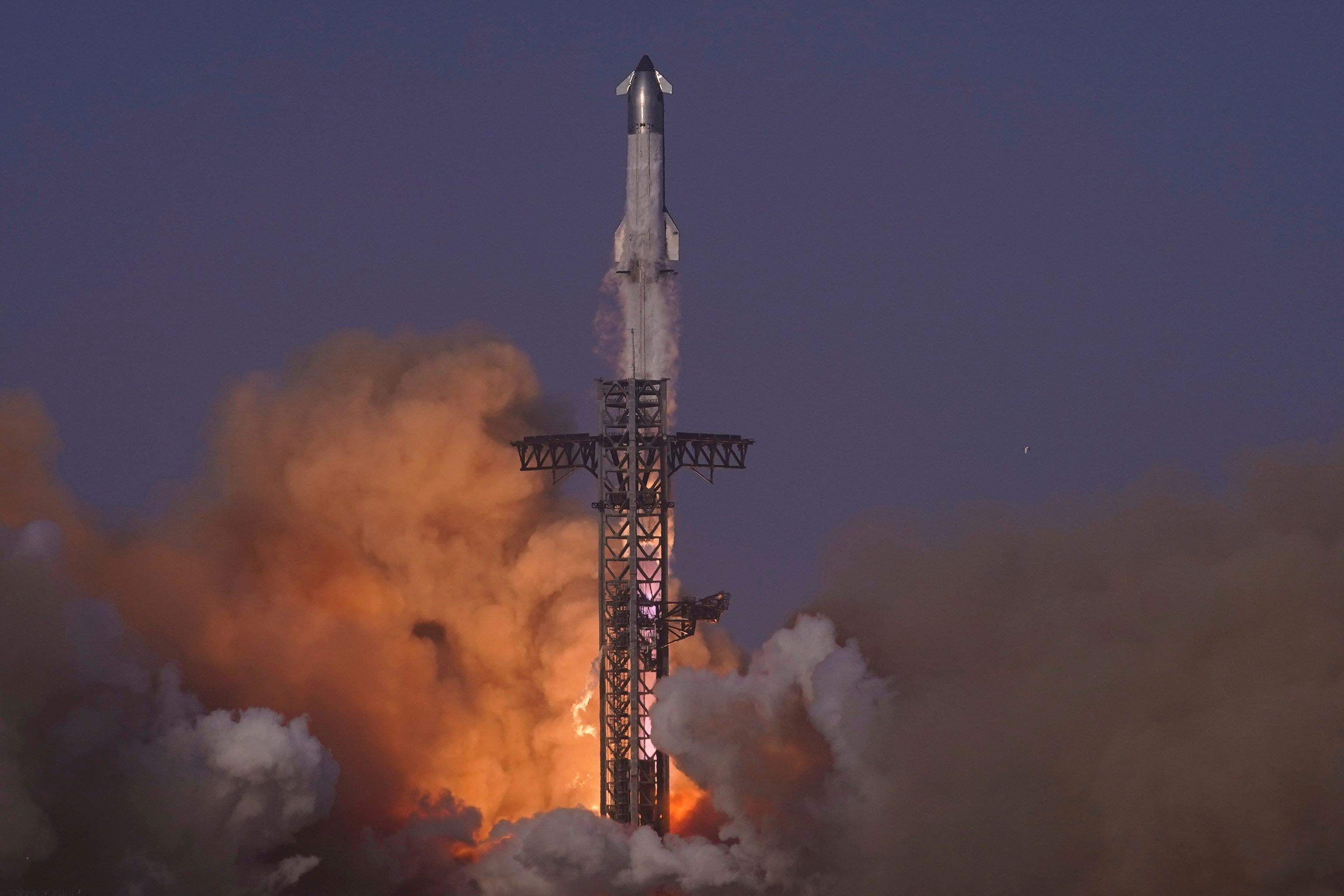
SACRAMENTO, United States - SpaceX's Starship rocket suffered another failure Tuesday evening, marking the third straight loss of its next-generation Starship upper stage and dealing a fresh blow to the company's Mars colonization ambitions.
The 122-meter-tall Starship rocket lifted off at 7:37 pm local time Tuesday (0337 GMT Wednesday) from SpaceX's Starbase facility near Boca Chica, Texas. Both the Super Heavy booster and the Starship upper stage were destroyed during the test. The mission represented the first attempt to reuse a Super Heavy booster in the Starship program.
READ MORE: Musk's SpaceX is frontrunner to build Trump's Golden Dome missile shield
"We have lost attitude control," SpaceX spokesperson Dan Huot announced during the company's live broadcast. The spacecraft "did spring a leak in some of the fuel tank systems inside of Starship," he said.
The Super Heavy first stage, powered by 33 methane-fueled engines, suffered catastrophic failure at the moment its engines reignited for landing in the Gulf of Mexico. SpaceX had deliberately programmed the booster to follow a more stressful descent trajectory as part of experimental testing.
The Starship upper stage initially performed well. However, a cargo hatch failed to fully open, preventing the deployment of eight dummy Starlink satellites designed to test cargo deployment capabilities.
ALSO READ: NASA astronauts return via SpaceX after nine-month odyssey
When the spacecraft lost attitude control due to fuel system leaks, it became impossible to orient properly for atmospheric reentry. Mission controllers eventually decided to "passivate" the vehicle, meaning they vented all remaining propellant overboard to ensure an uncontrolled reentry over the Indian Ocean.
The failure of the ninth test flight continued a troubling pattern for SpaceX's Block 2 Starship design. The repeated failures posed significant challenges for NASA's Artemis program, which relies on a modified version of Starship to land astronauts on the Moon by 2027.
ALSO READ: Amazon launches first Kuiper internet satellites, taking on Starlink
According to Spaceflight Now, SpaceX is "under pressure to have a fully successful launch since it has yet to fly a successful mission with the Block 2 Starship second stage".


